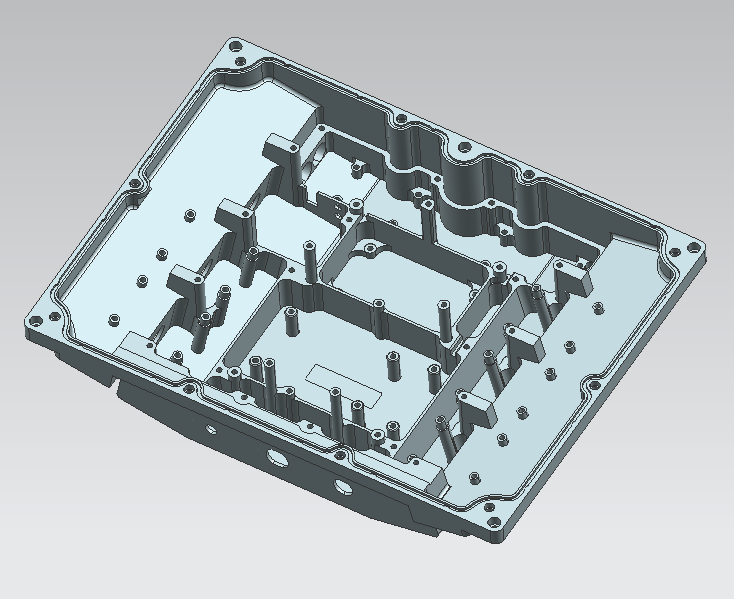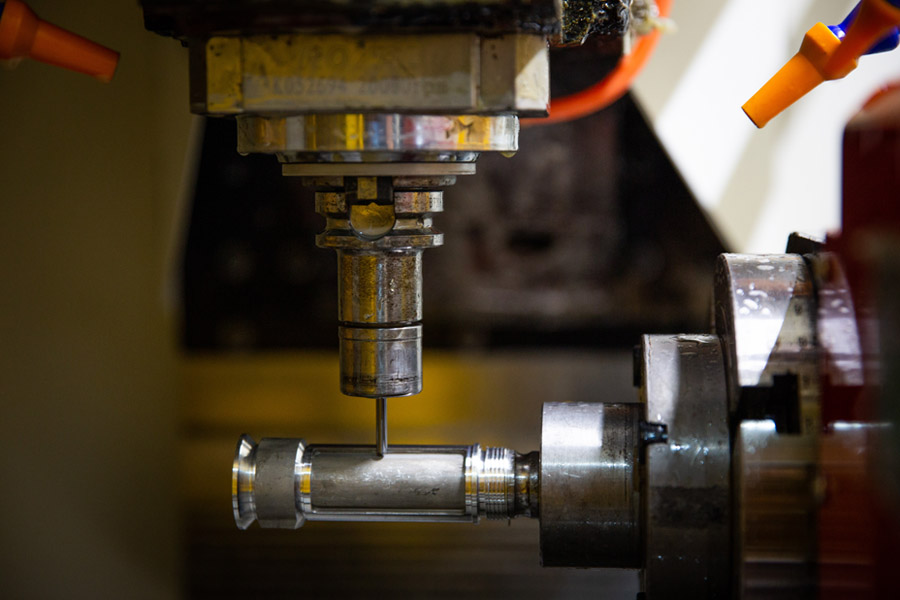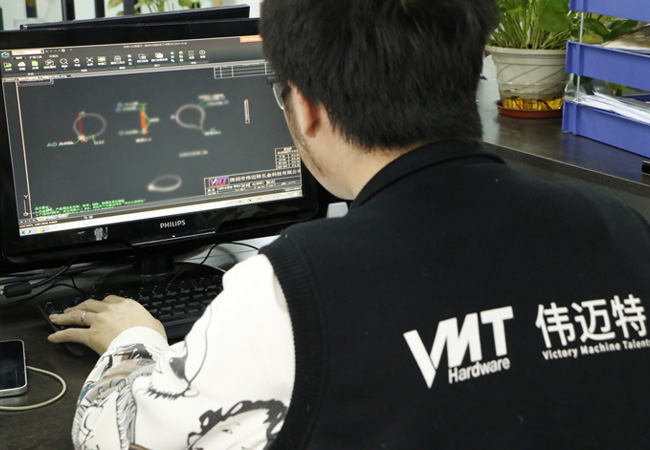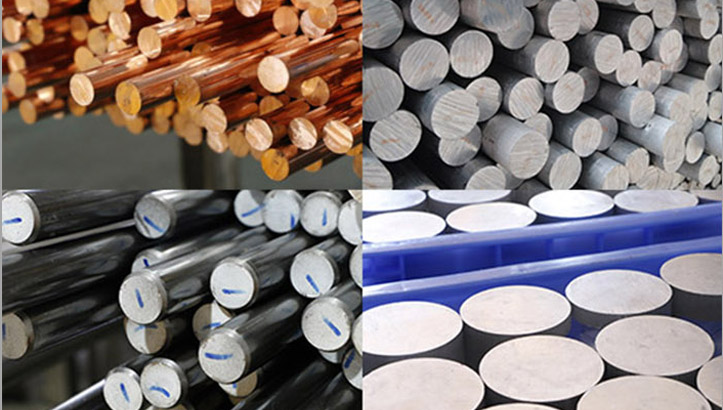VMT’s blog aims to share our practical experience and knowledge accumulated during the manufacturing and product development process. Our goal is to use these articles to help you improve product design and increase your understanding of CNC machining, 3D printing, rapid prototyping, low-volume manufacturing, and surface treatment technologies. The information we provide is designed to provide actionable guidance and insights for your CNC machining projects.
CNC Machining Cost Control Guide: Identify Influencing Factors and Cost-Saving Strategies
CNC machining cost control is a complex process involving multiple key factors. From design to production, each step may have an impact on the final cost. Material selection, part design complexity, machining time, machine tool efficiency, and whether additional post-processing steps are required are all important factors in determining CNC machining costs. Understanding and properly controlling these factors is crucial to reducing CNC machining costs.
This guide will analyze these key factors and provide practical guidelines to help you effectively control costs at the beginning of the project, thereby reducing production costs while ensuring product quality.
Factors Affecting CNC Machining Costs
Understanding the factors that influence CNC machining cost is essential for optimizing budgets and improving manufacturing efficiency. Both product design and the type of CNC equipment used play a significant role in determining the final CNC machining pricing. Below are the main aspects that impact the total cost of CNC fabrications:
1.Design Cost
Design complexity directly affects the programming time, processing path and precision requirements of CNC machining, and is a key factor in controlling machining costs. By simplifying the product structure and reducing unnecessary machining features and tolerance requirements, the difficulty and time of machining can be significantly reduced. Designers should make full use of CAD/CAM software for 3D modeling and simulation analysis to discover and optimize potential problems in advance, ensuring that the design meets both functional requirements and is easy to manufacture.

To effectively control CNC machining costs during the design phase, here are some design considerations to keep in mind:
Tolerance setting: Reasonably set the tolerance range to avoid excessive pursuit of high precision and resulting in increased costs. Under the premise of not affecting product functions and performance, appropriately relax tolerance requirements to reduce processing difficulty and cost.
Hole size and depth optimization: Optimize the hole size and depth design to reduce the processing requirements of deep and small holes. Deep and small holes not only have slow processing speeds, but are also prone to damage to the tool, increasing processing costs.
Inner diameter size selection: When designing the inner diameter, consider its impact on processing speed and cost. A smaller inner diameter requires a smaller end mill, which may result in a decrease in processing speed. Within the feasible range, choose a larger inner diameter size as much as possible to improve processing efficiency and reduce costs.
Cutting depth and cavity design: Rationally plan the cutting depth and cavity shape to avoid the design of ultra-deep cavities. Ultra-deep cavities not only take a long time to process, but may also require specially ordered tools, increasing costs.
Wall thickness design: Pay attention to the choice of wall thickness and ensure it is within the recommended range to avoid processing problems. The recommended absolute minimum wall thickness for plastic parts is 1.0 mm and for metal parts is 0.5 mm. Too thin a wall thickness requires extra care to prevent deformation or cracking, and may also increase processing difficulty and cost.
Undercut feature processing: Consider the processing needs of undercut features (such as O-ring grooves, keyways, etc.) in the design. These features usually require specially designed tools to be processed, which may increase costs.
2.CNC Machine Tool Ccost
The cost of a CNC machine tool is primarily determined by its design complexity, processing capabilities, size, weight, speed, power, and specific configuration. Different types of CNC machine tools are suitable for different processing needs, so their cost ranges vary.

Below is a price comparison of various types of CNC machine tools:
The type of CNC machine selected significantly impacts overall CNC machining cost, as different machines are designed for different operations, precision levels, and materials. Understanding the cost range of each machine type helps businesses make informed decisions when planning CNC fabrications or investing in equipment. (Note: The prices listed below are for reference only, as actual costs may vary due to market changes and other influencing factors. )
| Type of CNC Machine Tool | Description | Typical Price Range (USD) |
|---|---|---|
| CNC Milling Machine | Commonly used for metal cutting and drilling; cost varies with specs and accuracy. | $10,000 – $60,000 |
| CNC Lathe | Ideal for turning operations; pricing depends on machine size and control system. | $15,000 – $45,000 |
| CNC Engraving Machine | Suitable for soft materials like wood; designed for small-scale use. | $3,000 – $20,000 |
| CNC Plasma Cutter | Used for cutting metals; price varies by cutting capacity and precision. | $8,000 – $30,000 |
| CNC Laser Cutting Machine | Offers high-precision cutting for various materials using laser technology. | $10,000 – $70,000 |
| Five-Axis CNC Machine | Advanced system for complex geometries and multi-axis machining. | $75,000 – $250,000 |
| CNC Swiss Machine | Specialized in high-precision parts, often used in the medical and electronics sectors. | $30,000 – $100,000 |
| CNC Grinding Machine | Designed for finishing operations; cost varies by automation and material range. | $20,000 – $80,000 |
3. Material Cost
The choice of materials directly affects the total cost of CNC machining. Although high-quality raw materials are more expensive, they can ensure the quality and performance of the processed parts. At the same time, improving the utilization rate of materials and reducing losses are also effective ways to reduce material costs.
4. Machining Time
Machining time is an important indicator to measure CNC machining costs. By optimizing the processing path, selecting reasonable cutting parameters, and improving the utilization rate and processing efficiency of machine tools, the processing time can be significantly shortened and the production cost can be reduced.
For example, the use of high-speed milling technology can greatly improve the processing speed; and 5-axis machining technology can realize direct processing of complex surfaces, reducing the number of clamping times and processing time.
5. Labor Cost
In CNC machining, labor costs are an important and complex consideration, in stark contrast to manual machining. Compared with manual machining, CNC machining has a significant advantage in reducing the direct manufacturing labor demand, but labor costs are still a part that cannot be ignored.
For example: designing 3D CAD models, programming and setting up CNC machines, monitoring the machining process, post-processing and assembly, as well as logistics and distribution all require labor input.
6. Surface Treatment
Product surface treatment is a key step to improve aesthetics and remove processing marks, including polishing, coating, anodizing, painting and other processes. Although these treatments can enhance the appearance of the product, they also increase costs, especially complex treatments. During design and production, it is necessary to weigh the aesthetic needs and cost impacts and select the appropriate surface treatment process to achieve the best cost-effectiveness.
7. Tolerance and Quantity
Tolerance and quantity are two other important factors that affect CNC machining costs. Manufacturing products with tight tolerances requires more complex machinery and longer processing time; while the size of the order directly affects the total cost and unit cost.
Strategies to save CNC machining costs.
Reducing CNC machining cost is essential for manufacturers aiming to stay competitive. Cost-saving can be achieved through smarter design, better machining practices, material choices, and efficient inventory control. The following strategies outline how to minimize expenses without compromising quality.
1. Cost Considerations During the Design Phase
When designing CNC parts, the structure should be simplified and unnecessary processing features should be reduced to reduce processing costs. Use CAD/CAM software for precise modeling to find and correct design problems in advance to avoid waste in subsequent processing.

When designing details, attention should be paid to:
- Uses standard hole and thread sizes, reducing the need for custom tooling.
- Avoid designing thin-walled and deep-cavity structures to reduce processing difficulty and scrap rate.
- Set the tolerance range reasonably to avoid overly strict tolerance requirements that increase processing and testing costs.
Modular design helps to simplify the processing process, improve production efficiency and reduce costs.
2. Improvement of Machining Technology
Optimize cutting parameters and machining paths to reduce cutting forces and vibrations, extend tool life, and reduce machine tool loads. Consider using more efficient machining techniques, such as high-speed milling, to increase machining speed and accuracy.
3. Material Selection and Inventory Management
Choose cost-effective and easy-to-process materials, and establish long-term cooperative relationships with suppliers to obtain more favorable prices. At the same time, manage inventory reasonably to avoid excessive backlogs and reduce capital occupation.

4. Automation and Intelligent Assistance
Introducing automated equipment and intelligent monitoring systems can reduce manual operations and improve production efficiency and product quality. Automated loading and unloading and testing equipment can reduce manual handling and testing time, and the intelligent monitoring system can detect problems in production in a timely manner and take measures.
5. Optimization of Mass Production
For small batch production, reasonably plan the production batches to reduce the changeover time. Through modular design, complex parts are broken down into simple components for processing and assembly to reduce production costs.
In conclusion
In the manufacturing industry, optimizing CNC machining costs is the key to ensuring project budget control and improving overall profitability. In CNC machining, in order to reduce costs, it is necessary to carefully consider the design complexity, size, surface treatment requirements and material selection of parts.
Choose VMT as Your Trusted CNC Machining Manufacturer.
With 15 years of experience, VMT offers integrated supply chain solutions and strict process control, achieving a 98% pass rate. Specializing in high-quality appearance parts, we provide customized CNC machining services with multi-process capabilities and material combinations. Our full-service facility includes CNC milling, turning, mill-turn, Swiss machining, 5-axis machining, and prototyping, along with a wide range of over 40 customizable surface treatments such as heat treatment, PVD coating, anodizing, polishing, and sandblasting.
Frequently Asked Questions About CNC Machining Cost
Is CNC Machining Expensive?
The cost of CNC machining varies depending on factors such as the type of CNC machine, material, design complexity, and production scale, and is roughly between $30 and $120 per hour. For large-scale production, its automation and precision can reduce costs; while small projects or single production runs may be more expensive due to the fixed costs involved.
How Can Ddesign Changes Help Reduce CNC Machining Costs?
Design changes can effectively reduce CNC machining costs and improve production efficiency and economic benefits by simplifying the design to reduce complex features, optimizing material usage and layout, adjusting thread length, removing non-essential functions, taking advantage of economies of scale, decomposing complex parts, adapting to existing processing equipment, reasonably setting tolerances, and using advanced software and technology.
How Much Does CNC Machining Cost?
The cost of CNC machining can vary widely depending on several factors such as material, part complexity, quantity, and surface finish. For simple CNC fabrications, pricing might be lower, especially for high-volume production. When calculating CNC machining pricing, key elements include:
-
Material cost (e.g., aluminum, steel, plastic)
-
Machining time (more complex designs require more time)
-
Post-processing (anodizing, polishing, painting, etc.)
-
Setup fees and tooling
For custom or prototype parts, the cost CNC services charge may also include CAD/CAM programming or fixture creation. To get the most accurate CNC machining cost, it’s best to request a quote based on your specific drawing and quantity.



